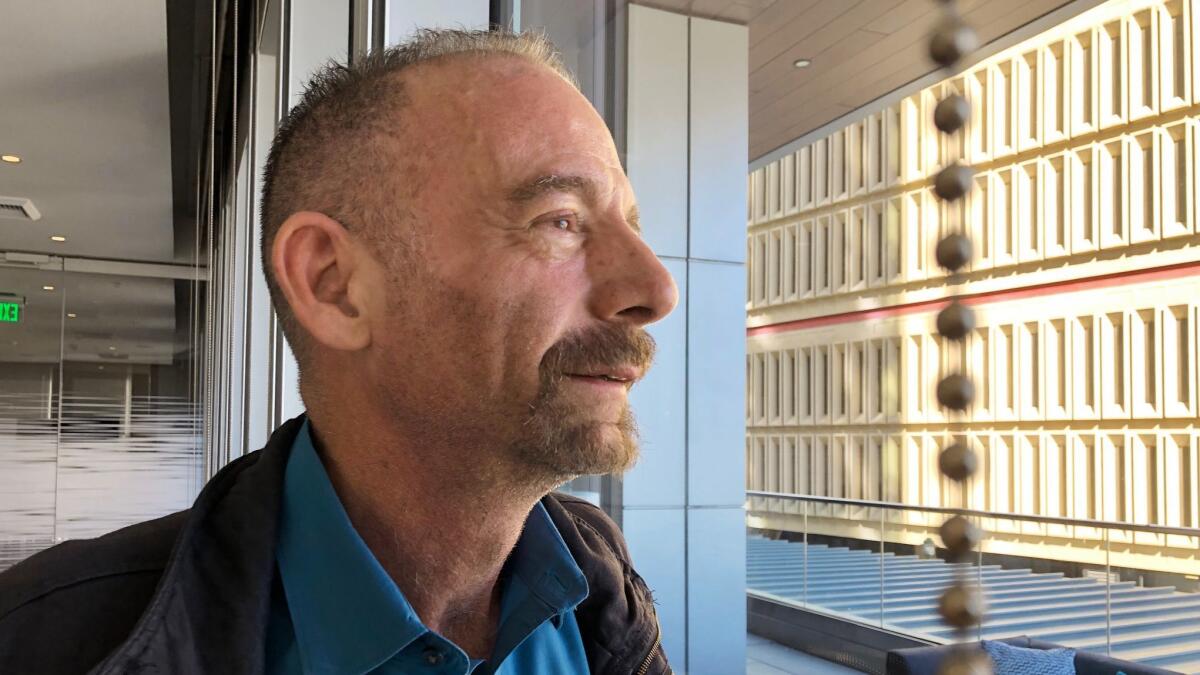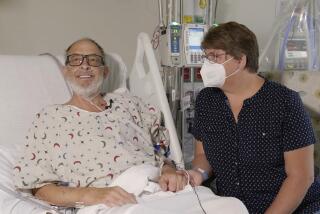Second HIV patient is in long-term remission, a decade after the first

- Share via
Reporting from London — A London man has been in remission from HIV for a year and a half, without drugs, after receiving a stem cell transplant of virus-resistant cells — raising the prospect that he has become the second person to ever be cured of the disease.
The “London patient” case, cautiously reported in the journal Nature as still too “premature” to be declared a cure, comes a decade after Timothy Brown, known in medical circles as the “Berlin patient” was cured by a similar stem cell transplant, galvanizing the field of HIV research and sparking the search for a cure.
“I think this is really quite significant. It shows the Berlin patient was not just a one-off, that this is a rational approach in limited circumstances,” said Daniel Kuritzkes, chief of infectious diseases at Brigham and Women’s Hospital, who was not involved in the study. “Nobody doubted the truth of the report with the Berlin patient, but it was one patient — and which of the many things that were done to him contributed to the apparent cure? It wasn’t clear this could be reproduced.”
The London patient, infected with HIV and suffering from Hodgkin’s lymphoma, received bone marrow cells from a donor who had a malfunctioning CCR5 gene as part of his cancer treatment. The gene is known to create a protein that is crucial for HIV to invade blood cells. Brown had also received a transplant without functioning CCR5 genes.
A second set of “Boston patients,” who received stem cell transplants with functioning CCR5 genes, also experienced marked reductions in the reservoir of HIV in their cells — and were able to go without treatment for months, showing that the transplant itself played a role in knocking back the virus. But their temporary results also suggested that the aberrant gene was necessary for a sustained cure.
Despite efforts to replicate the remarkable Berlin results, researchers had failed for a decade — in part because the possibility of doing such transplants is rare.
Stem cell transplants are risky and attempted only when there is a clinical reason to do them, such as cancer. Donors must be a genetic match to recipients, and there are very few people who also naturally carry two copies of the disabled CCR5 gene, which limits the number of potential transplants.
Several patients who have received such transplants since Brown’s successful treatment have died of the underlying cancer, several HIV researchers noted.
That doesn’t diminish excitement about the new case from the research community, which has become interested in using gene therapy to disable the CCR5 gene, using other technologies — including the gene-editing technology CRISPR.
“These new findings reaffirm our belief that there exists a proof of concept that HIV is curable,” International AIDS Society President Anton Pozniak said in a statement. “The hope is that this will eventually lead to a safe, cost-effective and easy strategy to achieve these results using gene technology or antibody techniques.”
The CCR5 gene was thrust into the international spotlight recently by the revelation that a Chinese scientist had attempted to edit human embryos to create the same deletion, with the hopes of creating babies that were immune to HIV.
The experiment, which is under investigation and does not even appear to have succeeded at creating the desired deletion in twin girls, was widely condemned as unethical, a premature and reckless use of an unproven technology and medically unnecessary because of a multitude of other ways to prevent HIV transmission.
But researchers do hope that shutting down the CCR5 gene could offer a way to cure HIV in adults who are infected.
“I think that one thing we’ve learned is finding a scalable, economically feasible cure, or HIV remission, is going to be difficult,” said Timothy Henrich, an infectious disease specialist at the UC San Francisco. “It’s not going to be easy, and it’s not going to be quick. But I think that every year we get a little bit closer to the ultimate goal, and cases like this I hope will continue to excite and inform the community.”
Johnson writes for the Washington Post.






